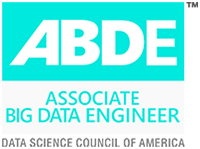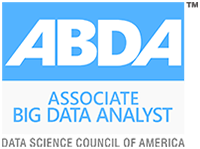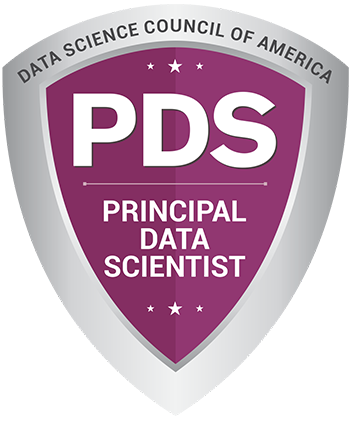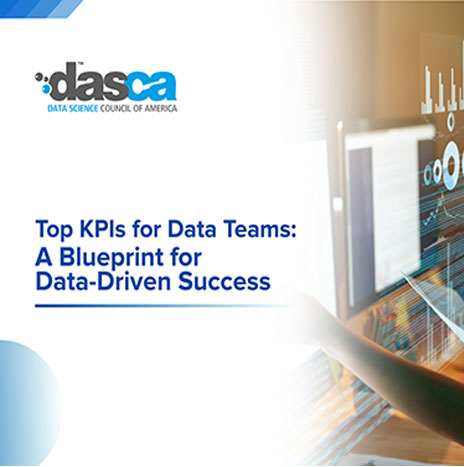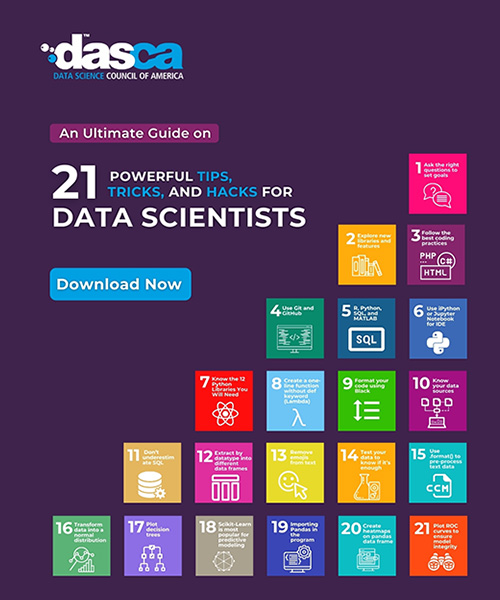
There is an ongoing discussion related to the best tool that is highly been used by Data Scientists to perform their tasks at the workplace. In their job role, it is very important to know the usage of deploying various data tools as they are very helpful for the process of data analysis. Exploring several data sets and understanding their structure, content, and relationships is a day-to-day task for every Data Scientist. There are several tools that exist for performing those tasks.
In this article, let’s understand the most important tools that offer several functionalities to perform several tasks that are related to big data – Pandas and SQL, as they are highly considered for the tasks that are related to data mining and manipulations. They provide various approaches which are very helpful to perform data analysis. These tools play a very essential role in the job role of data scientists, data analysts, and professionals who work in the field of business intelligence.
Now, let’s dive deeper to gain in-depth insights into each tool, know their differences and various key commands to generate random data and analyze it briefly.
Pandas Vs SQL
Pandas and SQL may look quite same, but their nature is varied in many ways. Pandas mainly store data in the form of table-like objects and also provide a vast range of methods to transform those. This aspect makes it a preferred tool for the process of data analysis.
Whereas, SQL is a declarative language, which is designed to gather, transform and prepare the datasets. If data resides in a relational database, letting a database engine perform the steps is a good way. The engines are usually optimized to perform those tasks, they also let the database prepare a clean and convenient dataset, which facilitates the analysis process.
Let’s have a look at the key differences between Pandas and SQL.
| Pandas | SQL |
|---|---|
| Setup is easy | Setup needs tuning and optimization of the query |
| Complexity is less since it is just a package that requires being imported | Configuration and other database configurations give more complexity and time of execution |
| Reliability and scalability are less | Reliability and scalability are much better |
| Security is compromised | Security is higher due to Atomicity, Consistency, Isolation, and Durability (ACID) properties |
| Math, statistics, and procedural approaches like User Defined Functions (UDF) are handled efficiently | Math, statistics, and procedural approaches like User Defined Functions (UDF) are not performed well enough |
| Cannot be easily integrated with other languages and applications | Can be easily integrated to offer support with all languages |
| People with good technical knowledge can do data manipulation operations | Very easy to read, understand since SQL is a structured language |
Now, let’s understand the about the Pandas and few important commands that are highly helpful.
Pandas
Python supports an in-built library Pandas, which is an open-source data analysis tool. Pandas is very useful to perform the tasks that are related to data analysis where the process of manipulation is done very quickly with more efficiency. Pandas library effectively manages data available in uni-dimensional arrays, which are as called ‘Series’, and multi-dimensional arrays called ‘Data Frames.’
Python offers a huge variety of in-built functions and utilities to perform data transforming and manipulations. Statistical modeling, filtering, file operations, sorting, and import or export with the NumPy module are a few vital features of the Pandas library. Huge amounts of data are managed and mined in a better and most user-friendly way.
To build calculated fields from existing features
In Pandas, one can simply divide features much easier when compared to SQL.
df["latest_column"] = df["first_column"]/df["second_column"]
The aforementioned code clearly states that how to divide the two separate columns and assigning those values to the latest column. In this case, one can do the feature creation task on the entire dataset. This is helpful for both feature exploration and feature engineering in the process of data science.
Pandas are very helpful when the data is already in a file format (.csv, .txt, .tsv, etc). It also gives an option to perform tasks on data sets without impacting database resources.Converting file into data frame - pandas.read_csv()
Initially, it is required to pull the data into a data frame. Once it is set to a variable name (‘df’ below), one can use the other functions to analyze and manipulate the data. Here, let’s take the ‘index_col’ parameter while loading the data into a data frame. This parameter is setting the first column (index = 0) as the row labels for the data frame.
# Command to import the pandas library to the notebook import pandas as pd # Read data from Titan dataset. df = pd.read_csv('...titan.csv', index_col=0) # Location of file, will be url or local folder structureThe ‘head’ command - pandas.head()
The head function is very useful in previewing what the data frame looks like after it has been loaded. The default can be shown as many rows as one wants to, but one will have the option to adjust it by just typing .head (10).
df.head()
-
The ‘info’ command - pandas.info()
The info function will provide a breakdown of the data frame columns and the non-null entries that each has. It also tells gives the kind of data type is for each column and the number of total entries that are available in the data frame.
df.info()
-
The ‘describe’ command - pandas.describe()
The describe function is very helpful to get the distribution of the data, particularly numerical fields like ints and floats. It returns a data frame with the mean, min, max, standard deviation, etc. for each column.
df.describe()
Moving on, let’s see about SQL and what are its important commands, which are highly used.
SQL
Structured Query Language (SQL) is a domain-specific language, which is very helpful in programming and designed for managing data held in a Relational Database Management System (RDBMS). The usage of SQL is quite impressive in various places due to its functionalities. For instance, SQL can be used by data engineers, Tableau developers, or even product managers. Many data scientists use SQL frequently. It is very crucial to know that there are many various versions of SQL, which consists of similar function, but slightly vary.
INSERT command
INSERT INTO account (‘A/c number’,‘first Name’,‘last Name’) VALUES (‘123456789’,‘Rachael’,’ Scott’);
UPDATE command
UPDATE account SET contact number = 9988776655 WHERE A/c number = ‘123456789’
DELETE command
DELETE FROM account WHERE e-mail address = ‘rs1991@hotmail.com’;
JOIN command
One of the best aspects of SQL is the JOIN command. To explain it in simple words, the JOIN command makes the database ‘relational’. JOIN gives the user to link data from two or more tables in a single query by using of single ‘SELECT’ command.
For instance, one can easily get related data in multiple tables with the help of a single SQL statement, which gives A/c number, first name, and respective branch.
SELECT A/c number, first name, Branch FROM account LEFT JOIN last name ON A/c type;
Pandas or SQL: Which tool should a Data Scientist use?
Pandas usually lag for massive volumes of data but it has several functions that are helpful for the Data Scientists to manipulate data in an impressive way. Whereas SQL is highly efficient in querying data but it consists of fewer functions.
Pandas are highly recommended if a Data Scientist wants to manipulate the data or for plotting, as it is easier to analyze data with special plotting features that offer a faster plot to acquire in-detail insights into the data. Whereas SQL has to use Tableau for data visualization.
To summarize
Pandas and SQL are very effective tools. At places where simple data manipulations, like data retrieval, handling, join, filtering is done. SQL is helpful as it is easy to use. But, for massive data mining and manipulations, the query optimizations, Pandas is the best option. It is very important one should have a clear understanding so that they pick the right tool to perform certain data science tasks effectively.




